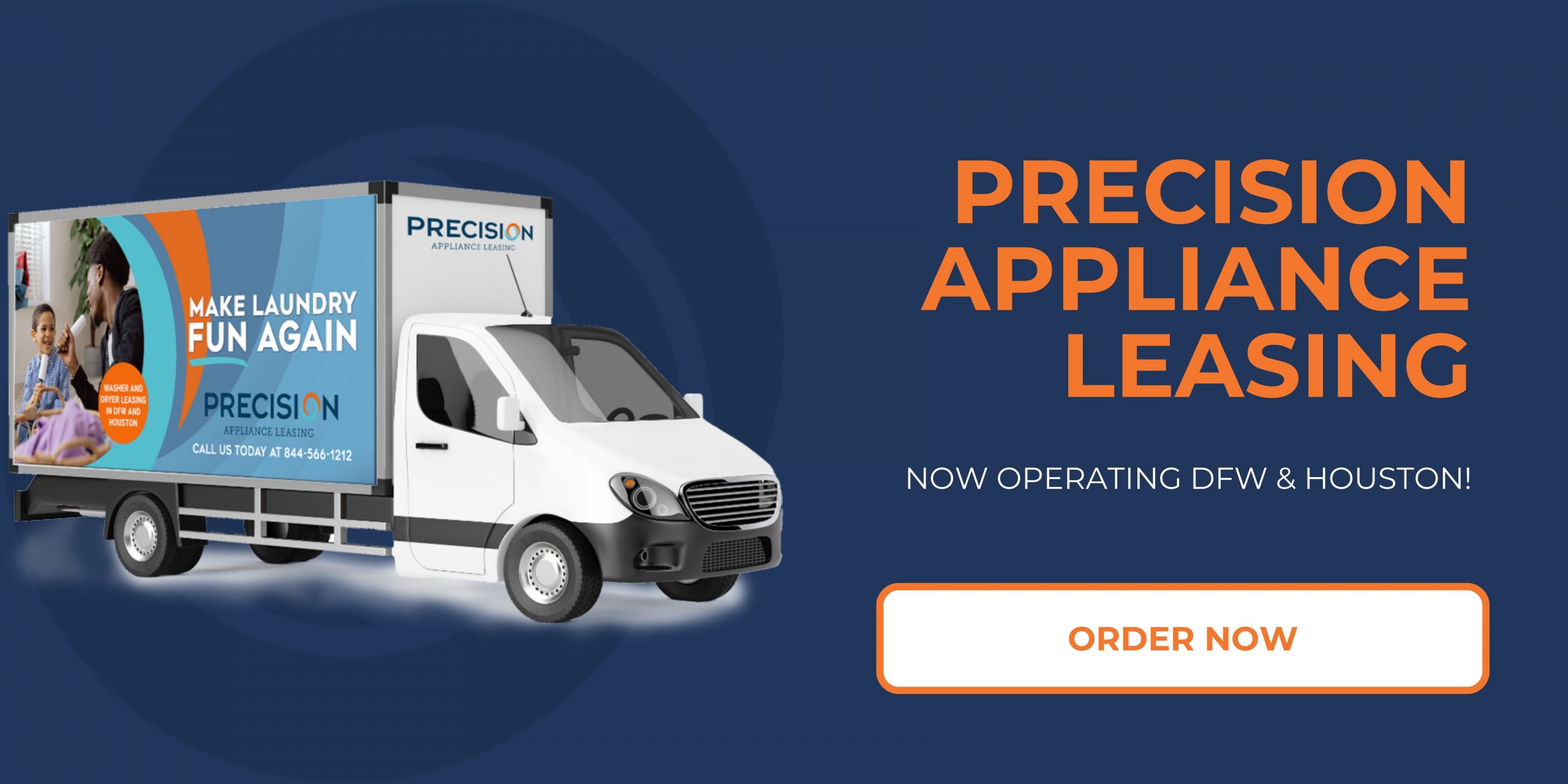Leased vs. Owned Appliances: Which Is Best for Your Rental? in Co-Living Spaces
In the evolving landscape of co-living spaces, the choices surrounding appliances can significantly influence both the living experience and the financial dynamics of rental agreements. As more individuals and families embrace co-living as a viable housing solution, the decision between leasing or owning appliances becomes increasingly pivotal. Each option carries its own set of advantages and considerations, shaping the practicality and aesthetic of shared living environments.
Leased appliances often offer flexibility and convenience, allowing tenants to avoid upfront costs while enjoying access to modern and energy-efficient models. This can be especially appealing in co-living situations where residents may prefer to minimize their personal financial commitments and focus on the shared community experience. On the other hand, owning appliances can provide a sense of stability and personalization, enabling residents to choose models that best suit their tastes and lifestyle needs.
As potential tenants weigh these options, understanding the implications of each choice is crucial. Factors such as the upfront financial commitments, maintenance responsibilities, and the anticipated duration of stay in a co-living context play essential roles in determining what may be the most suitable arrangement. In examining the unique dynamics of shared living, it’s vital to consider not just the immediate benefits but also the long-term impacts on personal finances and overall quality of life within a communal setting. Through this analysis, prospective residents and property managers alike can make informed decisions that enhance their co-living experience.
Cost Analysis of Leasing vs. Owning Appliances
When it comes to co-living spaces, the decision between leasing and owning appliances can significantly affect both the overall costs and the financial strategy of the operation. The cost analysis of leasing versus owning involves various factors, from initial investments to the total long-term expenses associated with maintenance and replacement over time.
Leasing appliances might initially appear to be a more budget-friendly option, especially for property owners or managers who are looking to minimize upfront costs. Leasing allows for predictable monthly expenses, which can help streamline budgeting and forecasting for co-living spaces. This arrangement can also offer access to higher-quality, newer models of appliances without the burden of paying for them outright. In fast-evolving markets, where trends and technology change rapidly, leasing can provide flexibility in upgrading appliances every few years without incurring additional costs for direct replacement.
On the other hand, owning appliances represents a different financial commitment that can be more cost-effective in the long run. While the upfront costs are higher, the expenses associated with owning appliances can diminish over time—particularly if the appliances are durable and well-maintained. Additionally, owned appliances may add to the overall value of the property, contributing to long-term asset appreciation. For co-living spaces that prioritize longevity and plan to operate for many years, the investment in ownership can lead to significant savings over time.
In assessing leasing versus ownership, it is also essential to consider the type of appliances in question and their projected usage. High-use appliances may require more frequent maintenance and repairs, potentially making ownership more costly in the long run. Conversely, items with lower usage may be ideal candidates for leasing, mitigating the risk of depreciation and maximizing financial efficiency. Ultimately, the cost analysis is complex and should take into account not only current financial capabilities but also future growth and operational goals within the co-living environment.
Maintenance and Repair Responsibilities
When considering whether to lease or own appliances in co-living spaces, maintenance and repair responsibilities emerge as a crucial factor. In co-living environments, where multiple residents share living spaces and amenities, the upkeep of appliances can significantly impact the overall resident experience. For leased appliances, maintenance responsibilities typically fall to the leasing company, which provides regular servicing and rapid repair services as part of the contract. This arrangement can be especially beneficial in co-living setups where quick appliance repair is necessary to avoid disruption among tenants. Residents can focus on their living experience without the added burden of dealing with appliance breakdowns or repairs, which are compassionately handled by the leasing provider.
On the other hand, owning appliances shifts the maintenance responsibility onto the property owner or the management team of the co-living space. This can create challenges, particularly in managing the repair timelines and processes efficiently. In cases where a property manager is stretched thin, the response to appliance issues may be delayed, leading to tenant dissatisfaction. Moreover, the property owner must also budget for potential repair costs, which varies greatly depending on the age and condition of the appliances. This financial burden can deter owners from investing in high-quality products that might require fewer repairs over time, leading to a vicious cycle of poor maintenance that can negatively affect tenant retention.
Ultimately, the decision between leasing and owning appliances in co-living spaces hinges on how these responsibilities align with the operational capabilities of the property management team and the expectations of the residents. If the property manager can provide excellent maintenance support, owning highly efficient and durable appliances might be worthwhile. However, if management is less equipped to handle frequent repairs, leasing could relieve some of the operational pressures and improve client satisfaction. Therefore, it’s essential for property owners to evaluate their management resources and the potential impact of appliance maintenance on tenant comfort and community engagement within the co-living space.
Flexibility and Adaptability in Co-Living Environments
In co-living spaces, the concept of flexibility and adaptability is crucial. These environments are designed to cater to a diverse group of individuals, including students, young professionals, and even families, each with varying needs and lifestyles. The choice between leased and owned appliances directly impacts how well these spaces can accommodate the evolving preferences of their residents. Leasing appliances can offer significant advantages in this context, allowing co-living arrangements to respond swiftly to the changing requirements of their occupants without the burden of long-term commitments that come with owning appliances.
Leased appliances provide the flexibility that is often necessary in dynamic living situations. For instance, if a new resident moves in and requires specific kitchen appliances or upgraded laundry machines, leasing allows for those changes to occur with minimal disruption and cost. Additionally, co-living spaces often evolve over time as new trends emerge – whether it’s the shift toward more energy-efficient appliances or the adoption of smart technology. Leasing means that co-living operators can pivot more easily, adapting the appliance inventory to reflect these trends without incurring the significant upfront costs associated with purchasing new equipment.
On the other hand, owning appliances can lead to limitations in terms of adaptability. Once appliances are purchased, making changes becomes less agile. The fixed nature of ownership ties a co-living space to its chosen appliances, which may not meet the needs or preferences of future residents. For instance, as tastes change or as the functionality of new technology emerges, owned appliances might not be as easily replaced or upgraded. This can lead to a space that feels outdated or mismatched to the needs of its community, ultimately impacting tenant satisfaction and retention.
In summary, the decision between leasing and owning appliances in co-living spaces ties closely to the principles of flexibility and adaptability. Leasing allows for rapid response to resident needs and changing trends, making it an ideal choice for environments that prioritize community and personalization. As co-living continues to grow in popularity, understanding these dynamics will be critical for operators looking to create inviting and functional spaces.
Impact on Space and Aesthetic Design
The impact of appliances on space and aesthetic design is a crucial consideration in co-living spaces. In these shared living environments, the integration of appliances must not only meet functional needs but also enhance the visual appeal and cohesion of communal areas. Since co-living spaces are often designed to promote collaboration and social interaction among residents, the choice of appliances can significantly influence both the usability of the space and the overall ambiance.
Leased appliances typically come with a more standardized look and feel, aligning with the branding and design ethos of the co-living provider. This uniformity can foster a sense of harmony within the communal areas, ensuring that all appliances contribute positively to the aesthetic. On the other hand, using owned appliances allows for a more personalized touch, as landlords or individuals can choose designs that reflect their taste or the target demographic’s preferences. However, this approach requires careful consideration, as mismatched appliances might create a disjointed visual experience.
Furthermore, the arrangement and placement of appliances are vital for maximizing space efficiency. Co-living environments, which usually prioritize open layouts and communal areas, demand thoughtful appliance placement to avoid clutter. In such settings, leased appliances often come with design specifications that fit compactly within available spaces while maintaining functionality. This consideration is essential in smaller units, where space is at a premium, but also in larger common areas to encourage interaction and ease of movement.
Ultimately, the decision between leased and owned appliances in co-living spaces should take into account not only the financial aspects but also how each option contributes to the overall space design and experience for residents. A well-thought-out appliance strategy can enhance the living experience, creating an inviting atmosphere that feels cohesive and functional for all inhabitants.
Long-Term Value and Investment Considerations
When evaluating the long-term value and investment considerations of leased versus owned appliances in co-living spaces, it’s essential to consider both financial and operational impacts. Leasing appliances may initially appear less burdensome due to lower upfront costs and the potential for modern equipment, but when viewed over an extended period, ownership can offer substantial long-term benefits. Owned appliances typically reflect a capital investment that, although higher upfront, can yield significant returns over time in terms of durability, reliability, and resale value.
In co-living environments, where turnover can be relatively high, the decision to lease or own also intertwines with the overall vision for the space. Leased appliances, while offering flexibility, may not foster a sense of permanence or community investment among residents. On the other hand, owned appliances can enhance the living experience by providing a stable and consistent environment that residents can depend on. Quality, owned appliances tend to be designed for longevity, reducing the likelihood of replacement costs, which can quickly accumulate with leased items that may be more prone to wear and tear.
Moreover, the consideration of long-term value involves not just financial calculations but also aligns with the values of sustainability and environmental responsibility often paramount in modern living spaces. Admissions of premium, energy-efficient appliances may contribute to a lower overall cost of living over time through reduced utilities and increased tenant satisfaction, creating an attractive proposition for potential residents. In co-living scenarios, where the goal is often to build community and enhance living standards, owning high-quality appliances can serve as a cornerstone of both a functional and appealing living environment, leading to higher occupant retention and reduced operational headaches.
Ultimately, the decision to lease versus own appliances in co-living spaces requires a thoughtful analysis of the potential long-term benefits compared to the short-term convenience of leasing. It reflects a deeper commitment to creating value not just for the property owner, but also for the community residing within the space.


